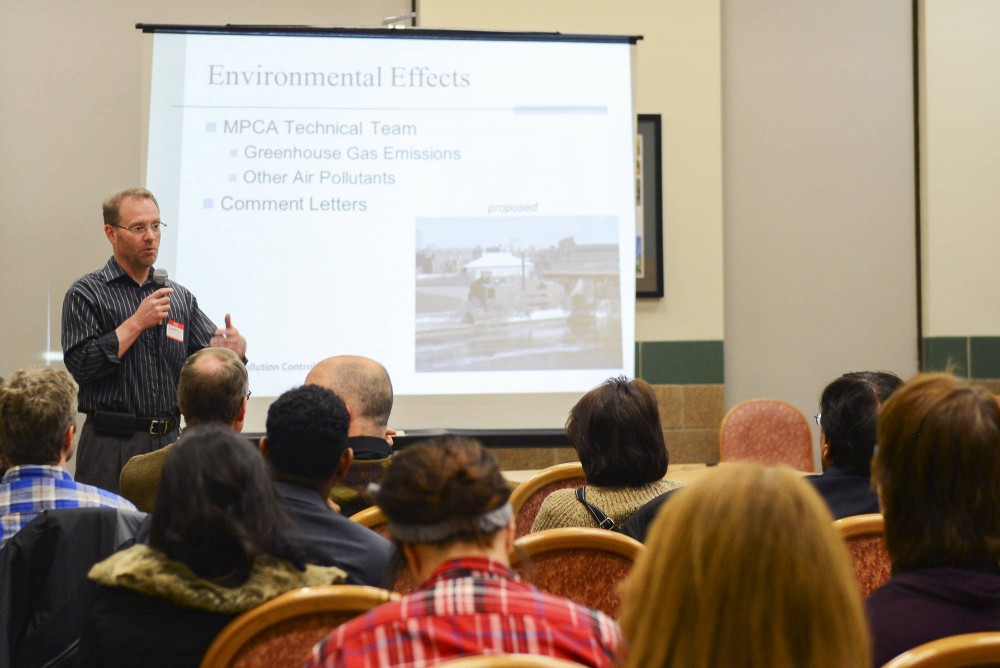The Minnesota Pollution Control Agency gave the green light to a University of Minnesota plan for a new heating and power system on Tuesday.
MPCA granted the University a permit to begin renovations on the Old Main Heating Plant building in the Marcy-Holmes neighborhood, which will house the new system.
Construction on the nearly $113 million combined heating and power system will begin in February, and the building will be in full use by December 2016, said Jerome Malmquist, director of the University’s Energy Management.
Although the MPCA Citizens’ Board unanimously approved the permit, some area residents previously voiced concern over the renovated building’s potential level of air pollution in the Cedar-Riverside neighborhood.
The MPCA held a public forum in the Cedar-Riverside neighborhood last week to hear residents’ comments or concerns about the project.
Joan Scully, a Riverside Park resident of 45 years, said at the meeting that she’s worried the new system could increase her neighborhood’s air pollution.
“I have serious concerns about how we’re poisoning ourselves,” she said.
But Scully, who previously worked as a building manager for the now-demolished Wesbrook Hall, said she knows first-hand how frustrating it can be when a heating system doesn’t work. Coming from that perspective, she said, she understands the need for the project.
The MPCA granted the new plant an air emissions permit, which means it will emit lower levels of air pollutants than the state mandates.
The MPCA previously conducted an environmental assessment of the project. The review found the new plant doesn’t carry potential for significant negative environmental effects, said Kim Grosenheider, who conducted the MPCA review.
AJ Siddiqui, a member of the West Bank Community Coalition’s Board of Directors, said the Cedar-Riverside community’s concerns over air pollution were alleviated by the MPCA.
The heat and power system will contain a natural gas turbine and heat recovery steam boiler that will generate electricity and heat for University buildings on the Minneapolis campus, according to the project’s website.
The University currently gets its heat from just one plant that was built in the 1940s and was renovated in 2000. But that plant is outdated and doesn’t meet the school’s sustainability standards, said Ken Kern, assistant vice president of the University’s Department of Environmental Health and Safety.
Approximately 85 percent of the Minneapolis campus’ steam production will come from the renovated Old Main Plant, according to project documents.
Kern said the new plant will be more efficient and help decrease the University’s carbon footprint. It will allow the school to retire two coal-fired boilers.
The University’s Sustainability Committee developed a plan in 2011 to cut its carbon footprint in half by 2020 and become carbon-neutral by 2050.
“This has been a high priority for a long time,” said Facilities Management Associate Vice President Mike Berthelsen.








